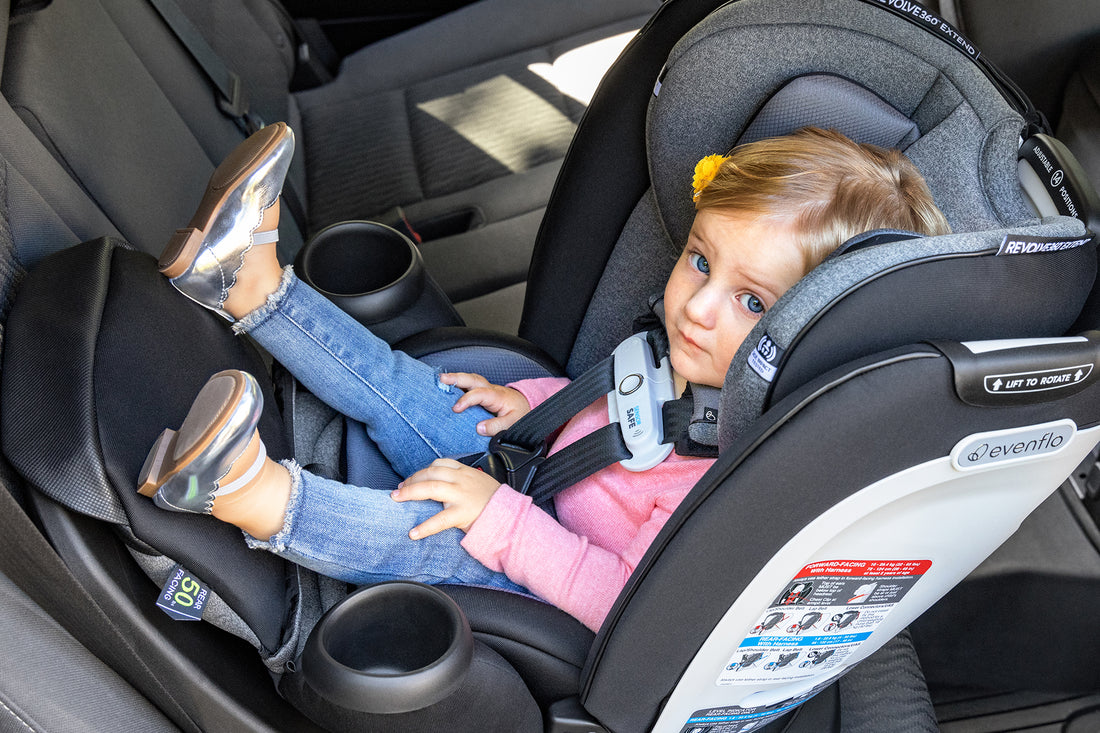Warmer months are finally here! While you’re getting ready for summer vacation, trips to the beach, and family adventures, Evenflo® and National Heatstroke Prevention Day are here to remind you to keep children safe when inside a vehicle as outside temperatures heat up.
What is pediatric vehicular heat stroke?
Pediatric vehicular heat stroke occurs when a child’s core body temperature reaches about 104 degrees.1 According to the American Academy of Pediatrics, a child’s body heats up three to five times faster than an adult's does. In addition, a vehicle interior can heat up by 20° F in just 10 minutes. Cars heat up fast, even when the outside temperature is as low as 57° F! Sadly, vehicular heatstroke kills children every year, often when caregivers unintentionally leave their children behind in the back seat of their vehicle.
Few people think they will ever leave their child behind in a vehicle. Put precautions in place anyway.
Ever felt tired? Stressed? Juggling too much? Or feel like you’re running on autopilot? Our memory is not foolproof and unintentionally leaving a child behind in a vehicle may not be a matter of negligence but circumstance. The worst thing we could do is think that it could never happen to us and to fail to take potentially lifesaving precautions. Here are some precautions you can take to help keep your child safe from the risk of pediatric vehicular heat stroke:
Set-up reminders to help ensure your child is not left behind in a vehicle.
You can set-up routines for yourself and other caregivers to follow as precautions to prevent a child from being unintentionally left behind in a vehicle:
- Put a visual reminder in the front seat: Place a stuffed animal in a visible location in front of the driver whenever traveling with a child. You can also use a diaper bag, magnet, sticker, or anything that you find catches your attention.
- Make it a habit to go to the backseat: You can place an item in the back such as a cell phone, left shoe, lunch box, purse or anything that will remind you to return to the vehicle when you’ve reached your destination.
- Make a pledge with your child’s caregivers: Arrange for child care providers to notify the primary caregiver if the child is ever late or absent when they were expected.
- Set a reminder for yourself: Set an alarm or a calendar alert on your mobile phone for the time when a child should be regularly dropped off at child care.
- Ensure children cannot gain access to a vehicle: Make sure your vehicle is locked when not in use, even when parked on your own driveway or in your own garage, and keys are put away out of the reach of children.
One precaution you can choose is an Evenflo car seat with SensorSafe™ Technology, connecting your phone directly to your child’s seat.
Many Evenflo car seats can help prevent pediatric vehicular heatstroke with integrated SensorSafe technology, that will send real-time alerts to your mobile phone via Bluetooth. Notably, you will receive an alert if you step away from a child buckled inside the vehicle. SensorSafe uses three levels of alerts and will send notifications to family members if the primary caregiver does not respond. In addition, SensorSafe monitors the temperature inside the vehicle and will send alerts if the temperature ever rises above 95° F or below 45° F, for added peace of mind.
In addition to its heatstroke prevention alerts, SensorSafe technology also alerts you if the child ever becomes unbuckled for any reason or if the child has been seated for over 2 hours, reminding you it’s time to take a break to move and stretch. That’s a system of four types of alerts designed to keep your child safe!
SensorSafe is available on select Evenflo car seats, including the new Shyft™ DualRide™ and Revolve360™ Extend.
Check the instruction manual before using a heatstroke prevention product with your child’s car seat
While SensorSafe is integrated into a select number of car seats to help reduce the risk of pediatric vehicular heatstroke, some products are designed to be added onto your child’s car seat. Whenever considering any external product intended to be used with your car seat, always follow your car seat’s instruction manual. Unless these products are approved for use by the manufacturer of the car seat, they may be detrimental to the safety performance of the seat.
¹ Child Heatstroke Prevention: Prevent Hot Car Deaths | NHTSA
